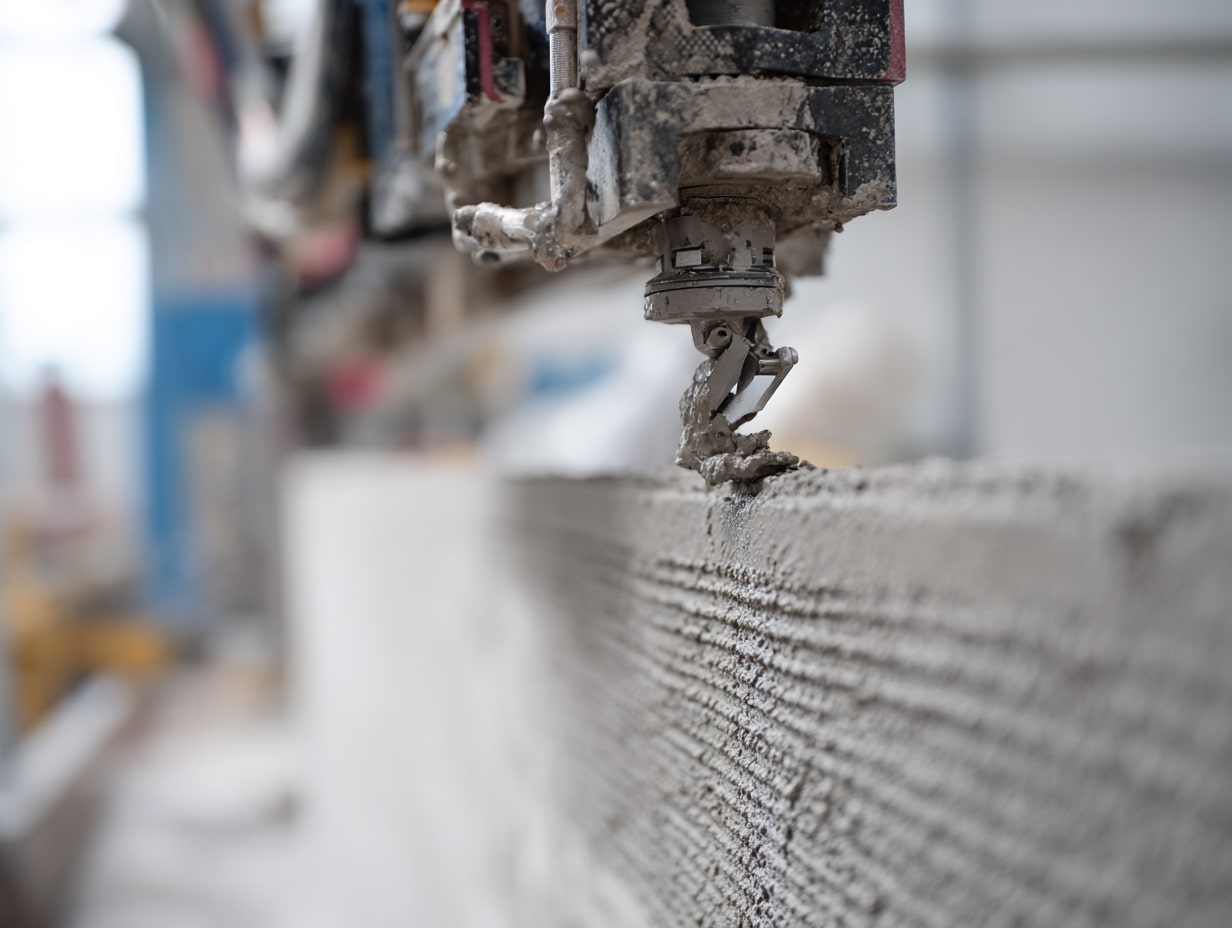- Home
- Articles
- Architectural Portfolio
- Architectral Presentation
- Inspirational Stories
- Architecture News
- Visualization
- BIM Industry
- Facade Design
- Parametric Design
- Career
- Landscape Architecture
- Construction
- Artificial Intelligence
- Sketching
- Design Softwares
- Diagrams
- Writing
- Architectural Tips
- Sustainability
- Courses
- Concept
- Technology
- History & Heritage
- Future of Architecture
- Guides & How-To
- Art & Culture
- Projects
- Interior Design
- Competitions
- Jobs
- Store
- Tools
- More
- Home
- Articles
- Architectural Portfolio
- Architectral Presentation
- Inspirational Stories
- Architecture News
- Visualization
- BIM Industry
- Facade Design
- Parametric Design
- Career
- Landscape Architecture
- Construction
- Artificial Intelligence
- Sketching
- Design Softwares
- Diagrams
- Writing
- Architectural Tips
- Sustainability
- Courses
- Concept
- Technology
- History & Heritage
- Future of Architecture
- Guides & How-To
- Art & Culture
- Projects
- Interior Design
- Competitions
- Jobs
- Store
- Tools
- More
Unlocking Architectural Innovation: The Essential Role of Site Analysis
Explore how site analysis plays a pivotal role in architectural design with examples from iconic projects like the Guggenheim Museum and Fallingwater House. Discover how technology like drones, BIM, and GIS is revolutionizing the process, yet understand the enduring importance of hands-on exploration.

Before we dive into the world of architecture, let’s take a moment to appreciate the importance of site analysis. It’s not just a fancy term tossed around by architects. It’s a critical step that can make or break a project.
Site analysis is like a compass for architects. It guides us through the design process, helping us understand the site’s unique characteristics. From the sun’s path to the prevailing winds, every detail matters.
Without a thorough site analysis, we’re essentially designing in the dark. It’s like trying to paint a masterpiece without looking at the canvas. So, let’s shed some light on the importance of site analysis for architectural projects.

Table of Contents
ToggleImportance of Site Analysis for Architectural Projects
Diving into the heart of this matter, it’s essential to recognize how intrinsic site analysis is to successful architectural ventures.
Understanding the Site
When embarking on a new project, one of the first steps we take is devoting time to fully comprehend the site. Here, we’re not just identifying physical characteristics such as topology, ground conditions, or access points. We delve deeper, going beyond what’s initially seen.
Our focus embraces how the site interacts with its surroundings. What are the connections between neighborhood structures, nearby infrastructure, or the broader local community? Further, how does the history of the site inform its present state? Answering these questions paints a comprehensive picture of the site, vital in allowing an architect to design effectively.
Assessing Environmental Factors
We place paramount importance on assessing environmental factors during the site analysis process. It’s more than just acknowledging the site’s weather patterns or seasonal changes. Our interest spans to include sunlight hours, wind directions, rainwater drainage, and presence of vegetation.
Notably, the understanding of these factors allows designs that respond creatively to the environment. It elevates a building’s performance, promoting sustainability, mitigating impact on local ecosystems which ultimately enhances the efficiency and longevity of structures.
Analyzing Legal and Regulatory Considerations
Lastly, a critical yet often overlooked aspect of site analysis involves investigating the site’s legal and regulatory constraints. We make it a priority to understand the zoning laws, building codes, and other regulations that may affect a potential project. Surveying for any easements, rights-of-way, or potential legal complications helps us avoid any future hiccups. Combining this knowledge with the former aspects mentioned allows us to breathe life into an architect’s vision while complying with all necessary regulations.
This will subsequently be followed by the next important element in the architectural project cycle. Having explored the key aspects of site analysis, we’ll now move forward into the theme of conceptual development and its respective nuances.


Benefits of Site Analysis
Transitioning from the details of comprehensive site analysis, we’ll now explore the resulting benefits that ultimately influence successful architectural projects. The advantages range from logistical efficiencies to environmental sustainability.
A vital benefit of site analysis is that it sets the foundation for effective project planning. Knowledge about the site’s topography, soil composition, and existing structures propels informed decision-making about building design and construction methods. Such understanding aids in avoiding unexpected complications during the construction phase.
Moreover, site analysis fosters sustainable design practices. Analysis of factors like climate conditions and natural vegetation helps integrate energy-efficient solutions. For instance, orientation of buildings can take advantage of natural light and heat, while trees and vegetation might be preserved to provide natural shading.
Site analysis becomes particularly crucial when interacting with surroundings. Thorough knowledge about neighboring structures, view corridors, sunpaths, wind direction, and other surroundings significantly influence building layout and design aesthetics. As such, comprehensive site analysis safeguards against designs that may negatively interact or conflict with the existing environment.
Table: Influence of Site Factors on Design Variables
| Site Factors | Design Variables |
|---|---|
| Soil composition | Foundation type |
| Sunpaths and Wind direction | Building Orientation |
| Vegetation | Shading and Landscaping |
Furthermore, site analysis ensures adherence to relevant legal and regulatory provisions. The knowledge about underlying zoning laws and building codes minimizes legal complications, securing a smooth path for the project.
Moving forward from site analysis, the subsequent stage of the architectural project cycle calls for a strategic approach to conceptual development. Only after a rigorous site analysis can we create architectural designs that are both aesthetically pleasing and functionally efficient. The process isn’t over here, though. We’ll now delve into the dimensions of conceptual development, destined to further refine our architectural project’s success.


Tools and Techniques for Site Analysis
With the fundamentals of conducting a site analysis well understood, let’s delve into the tools and techniques architects employ when getting down to the nitty gritty. It’s not all about intuition or subjective interpretations. There are concrete, systematic approaches that can streamline the process while ensuring a high level of accuracy.
Site Visits and Surveys
One cannot underestimate the significance of firsthand experience, which is why site visits are integral to the process. Setting foot on the uncharted territory, feeling the land beneath your shoes, taking in the surroundings – all contribute to a deeper understanding that goes beyond what remote tools or tech can offer. Through a site visit, we perceive subtle nuances, such as local noises, odors, or particular traffic patterns.
Coupled with site visits, surveys offer key insights into a site’s characteristics. Professional surveyors work to uncover detailed features of a site including its topography, soil type, and hydrology. They’ll provide data on site boundaries, gradients, and existing structures, all crucial details for subsequent design work.
3D Imaging and Modeling
Dominating the array of digital tools used today is 3D Imaging and Modeling. Advanced imaging technologies, such as drone photogrammetry, allow architects to create detailed digital replicas of a site, offering a bird’s eye view of the surroundings with stunning accuracy. Such a perspective can reveal insights that might be easily overlooked otherwise.
Garnering more acceptance in recent years is the use of 3D models. The aptitude to manipulate these models, to test different variables in a dynamic, interactive environment, proves an invaluable tool. They offer an avenue to evaluate potential design challenges, explore various design options, and foresee their impacts.
Having explored some tools for effective site analysis, let’s shift our attention to the practical applications of these and discuss how each step of the process factors into the architectural project cycle.
Case Studies
Moving forward, let’s delve into real-world applications of these tools and techniques in action. By studying successful architectural projects, we can better understand the significant role of comprehensive site analysis.
Successful Architectural Projects with Comprehensive Site Analysis
Famed architectural feats often have one thing common: an intensive, detailed site analysis phase. Take, for example, the Guggenheim Museum in Bilbao, Spain, designed by architect Frank Gehry. Through an in-depth site analysis, Gehry understood the site’s historical context – an old industrial port – and resourcefully incorporated it into the design.
Another architectural marvel influenced by comprehensive site analysis is the Fallingwater House in Pennsylvania, designed by Frank Lloyd Wright. Wright’s thorough understanding of the site, including the natural waterfall, allowed him to create a house that seemingly floats above the water.
We’ve highlighted these projects to underscore how embracing the specifics of a site can lead to innovative, striking designs.
Importance of Iterative Analysis
Iterative analysis is just as crucial in the process. While initial analysis provides a foundation, subsequent evaluations during the project lifecycle enhance the design outcomes. It’s a continuous process of refining and adapting designs in response to evolving insights from ongoing site analysis.
For example, the Bird’s Nest Stadium, designed by Herzog & de Meuron for the Beijing Olympics, went through numerous iterations during its design process. Through continual site analysis, the architects were able to adapt their design, eventually leading to its iconic, intertwining steel structure that we know today.
Let’s continue our discussion by exploring more about the technology’s role in site analysis and how shifting trends are impacting architectural design methodologies.


Conclusion
The critical role that site analysis occupies in the architectural design process is undisputable. We’ve delved into the significance of comprehensive site analysis, using illustrious architectural projects like the Guggenheim Museum, Fallingwater House, and the Bird’s Nest Stadium as sterling examples. These were not just one-off exercises. They were an integral part of the design evolution, leading to innovations that are still marveled at today.
Case studies clearly show that a thorough and iterative site analysis is the key to stellar architectural design outcomes. Through an iterative cycle of assessing the data, refining the blueprint, reevaluating the site, and adjusting the design, the originality of the projects became apparent.
One cannot overstate the impact of technology in site analysis and design methodologies. It’s reshaping the landscape of architecture and design, always empowering and sometimes challenging the traditional approaches to site analysis. Modern site analysis tools offer architects the chance to visualize, assess, and understand their sites in greater depth and detail than ever before.
Take, for instance, drone technology. It provides aerial views of a site capturing its nuances with utmost precision. Similarly, advanced software like Building Information Modeling (BIM) and Geographic Information System (GIS) have also revolutionized the way architects conduct site analysis.
While technology has unquestionably amplified the capabilities of the modern architect, the benefits of a manual, hands-on approach cannot be ignored. Walking around the site, getting a feel for the terrain, the natural features, understanding the local culture and heritage – these firsthand experiences provide insights that technology alone might fail to uncover.
Moving forward, it’s evident that a blend of manual investigation, technology, and iterative analysis will shape the future of architectural design. Integrating these elements into the process ensures that the built environment not only meets the requirements of the present but also caters for the future.
The ultimate aim is to cultivate designs that are timeless classics, just like the Guggenheim Museum or the Fallingwater House. Every new architectural project presents an opportunity to create something unique, something magical, with a legacy to endure. Such is the power of comprehensive and continual site analysis in architecture.
Submit your architectural projects
Follow these steps for submission your project. Submission FormLatest Posts
3D Printed Homes: Time, Cost, and What to Expect
3D printed homes explained: realistic timelines (24–72h walls, 8–16 weeks total), true...
How a Contact Centre Boosts Trust in Your Building Business
In construction, trust is the glue that holds projects together. Clients need...
How Real Time Parcel Geolocation Is Redefining Last Mile Efficiency for Modern Businesses
Last mile delivery has become the most critical point in the customer...
How Can Small Spaces Stay Stylish and Relaxing?
In today’s fast-paced urban lifestyle, small living spaces are becoming increasingly common....












Leave a comment